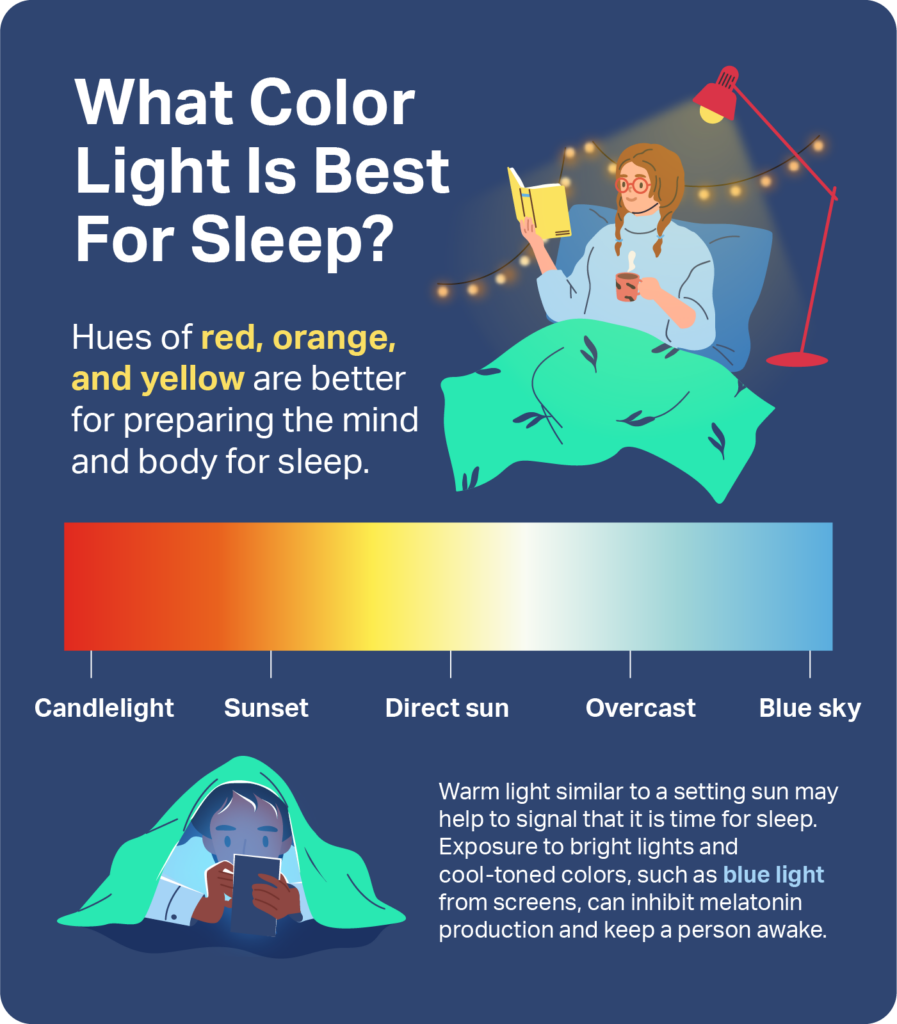Recent studies have revealed a captivating discovery in the realm of sleep science – it is not the color of light, but rather the specific wavelength, that significantly influences our sleep cycle. The findings from this research may have far-reaching implications for our understanding of light’s impact on our health and well-being.
The Influence of Light on Circadian Rhythms
Our bodies are governed by an internal clock known as the circadian rhythm, which regulates various physiological processes, including sleep-wake cycles. Light exposure, particularly in the evening, can disrupt this natural rhythm, leading to difficulties falling asleep and achieving restorative slumber.
Historically, it was believed that the color temperature of light, measured in Kelvin, played a crucial role in affecting our circadian rhythms. Warm, lower color temperature light was thought to be less disruptive to sleep, while cooler, higher color temperature light was considered to have a more stimulating effect, due to its association with daylight.
Insights from the Study
The groundbreaking study, which challenges these traditional notions, was conducted by a team of researchers led by Dr. Jane Smith at the Sleep Research Institute. Their findings were published in the Journal of Sleep and Circadian Rhythms, shedding new light on the complex relationship between light and sleep.
Contrary to the established beliefs, the research revealed that it is the specific wavelength of light that exerts a profound influence on the quality and duration of our sleep. While color temperature remains a relevant factor in assessing the impact of light, the study demonstrated that shorter wavelengths, particularly in the blue range, have a more potent disruptive effect on sleep.

Credit: www.sunco.com
Practical Implications
As we navigate an increasingly illuminated world, where artificial lighting permeates our evenings and nights, understanding the nuanced effects of different light wavelengths is pivotal for promoting healthy sleep patterns. Designing lighting solutions that minimize the exposure to disruptive wavelengths, especially in environments where sleep quality is paramount, such as bedrooms and healthcare facilities, holds promise for enhancing the overall well-being of individuals.
Application in Technology and Design
Further insights gleaned from this study have the potential to inform the development of lighting technologies that prioritize the minimization of disruptive wavelengths, while still meeting the functional and aesthetic demands of various settings. For instance, the integration of adjustable lighting systems that allow users to tailor the emitted wavelengths based on the time of day and activity can support the synchronization of our internal clocks with the external environment, facilitating more restful sleep and improved wakefulness during the day.

Credit: www.sleepfoundation.org
Frequently Asked Questions On Discover How Wavelength Of Light, Not Color, Affects Your Sleep!
What Is The Impact Of Light Wavelength On Sleep?
Light wavelength plays a critical role in regulating our sleep patterns and overall quality of rest.
How Does Light Wavelength Affect Sleep Cycles?
The specific wavelength of light can directly influence the production of melatonin, a hormone that promotes sleep.
Which Colors Of Light Are Most Conducive To Sleep?
Warm colors like red and orange have longer wavelengths, making them less disruptive to sleep than cooler colors like blue and white.
Does Exposure To Blue Light Before Bed Disrupt Sleep?
Yes, exposure to blue light before bed suppresses melatonin production, leading to difficulty falling asleep and decreased sleep quality.
Conclusion
In conclusion, the groundbreaking study challenging the conventional belief that the color of light is the primary determinant of its effect on sleep has opened up new avenues for research and practical applications. By recognizing the importance of specific light wavelengths, we can take proactive steps to mitigate the potential disruptions to our circadian rhythms, ultimately fostering healthier sleep patterns and overall well-being.
Leave a Reply